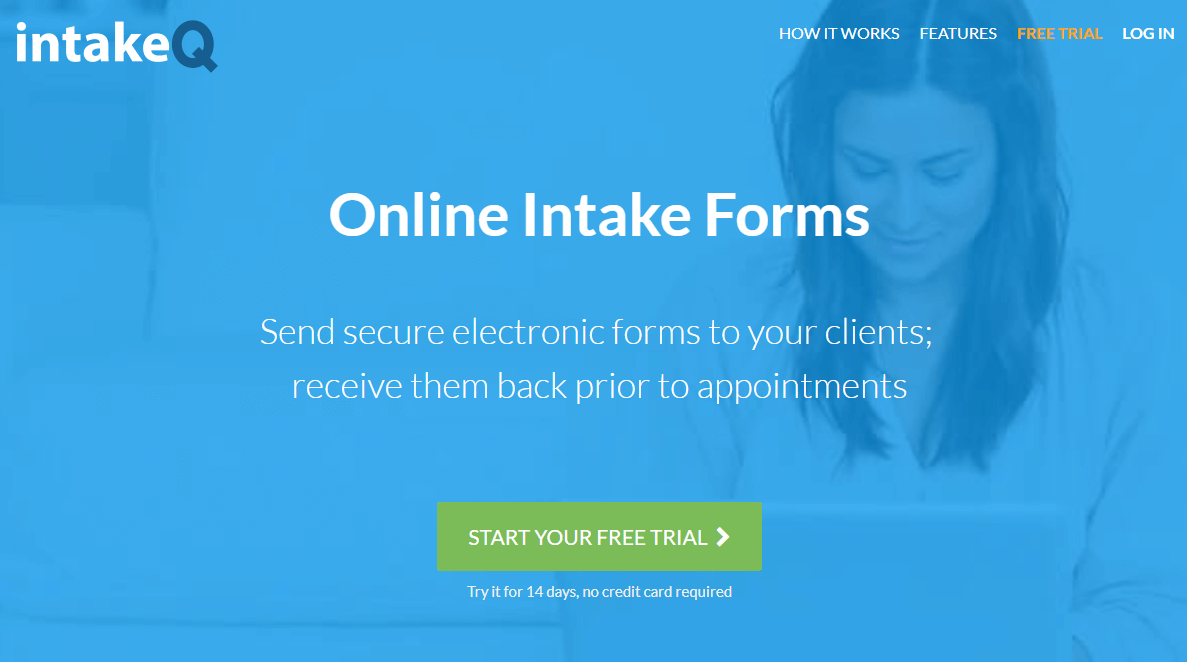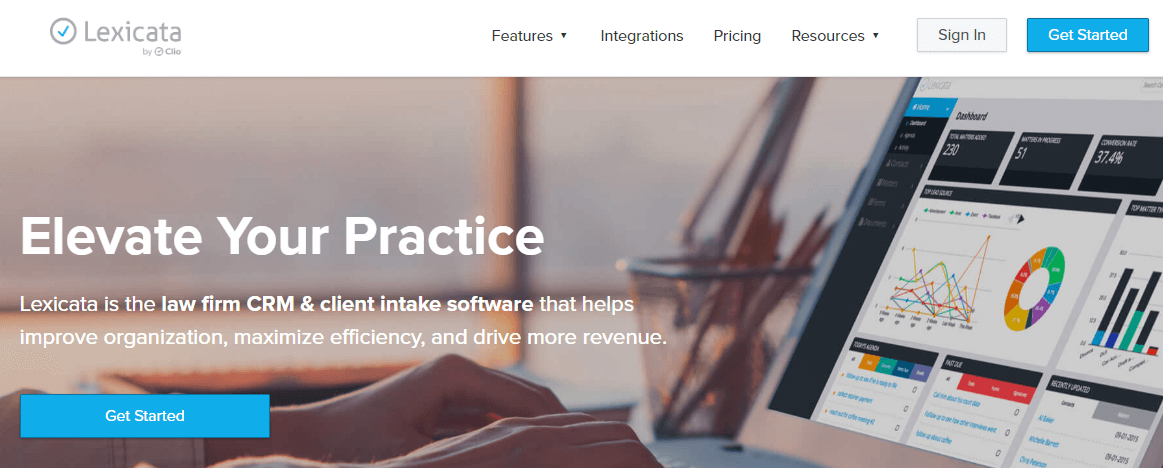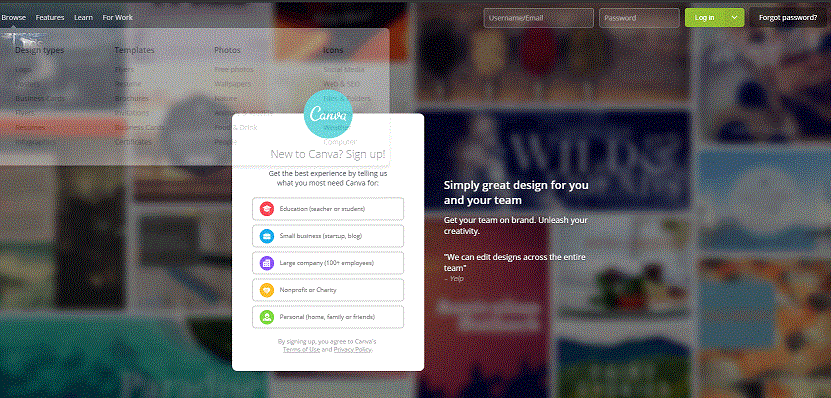Setting up a client intake form might sound trivial, but getting it right is actually very important to your business!
A client intake form not only saves you time by finding the right kind of clients for your business but also proves that you’re a professional service. It’s your first interaction with your customers, and we all know how important first impressions are.
Client intake forms were originally paper-based. But in the modern world, they need to be digital, or they’ll be ignored. An intake form is like the landing page of your website, so it’s the first impression users will have of your company. If it’s not a user-friendly process, it may put them off from working with you altogether.
You can use an intake form to get the information you need. But the trick is to use it to make your business look good while you’re doing it, which can be difficult to do. So we’re going to give you the step-by-step process to set up the perfect client intake form.
Value Your Time: The Right Client
Every client out there is not going to be the right fit for your business. It might boil down to money, attitude, or a lack of understanding about the benefits you can offer them.
By filling out an intake form, clients have to fully think through what they need from you. This process both helps you provide high-quality service and implies that you are speaking with focused clients who have thought through their needs.
Value your time. It’s a huge waste of time to dedicate weeks of attention and work to a client who may not choose to work with you. You will lose productivity and have less time to dedicate to valuable clients who are good fits for your business.
What If I Lose Potential Customers Because I’m Too Strict?
We’re not saying you must have an incredibly strict intake process. But it’s a good idea to have some criteria that clients have to meet before you start discussing work with them. As long as you know what you need from a client (such as their budget or the size of their business), you can filter who you speak with. At the end of the day, you won’t be losing potential business; you’ll be regaining productivity and the time you could have lost.
Some businesses force all of their clients to wait until they’re ‘available’ (a minimum of two weeks). This tactic can provide the perception that your service is in high demand. It also helps you find the clients that really want your service, rather than someone who may decide not to work with you after 24 hours.
What about a client in desperate need? Well, that’s your call, but you might find that a stressed-out client will not be valuable. Therefore, a two-week wait might prove to be useful.
Picking the Right Tool for Creating a Client Intake Form
Many platforms out there can help you create an attractive intake form. Whether you’re an A-list designer or a design novice, there’s a tool out there for you.
We’re going to discuss a few of the helpful tools, but keep in mind you can build an intake form with basic software (such as a word processor) if you want to. Or you can use a service specifically designed for an intake form. If you want something more professional and attractive, the latter will be your best option, but if you’re working on a budget, there are free options, too.
1. Canva
If you haven’t used Canva yet, you should. It’s a great free design tool. It has everything from banner templates to logos and PDFs. And it’s a more user-friendly tool than Adobe, so anyone can feel like a designer.
Once you’ve selected the section for A4 documents, it’s easy to start creating an intake form. The service is great for design, and also features instructions and tutorials if you get stuck. If you really want an eye-catching design, Canva is the best choice.
2. Wufoo

Wufoo, a free form-builder, is brought to you by Survey Monkey. For more features, you might consider upgrading to the paid service. You can build simple forms that you can privately share or upload to your website. The service is free, so the forms can be a little basic. But they’re easy to use and get the job done. The added bonus of Wufoo is you can also get some analytics about your forms, which you may find useful.
Wufoo isn’t specifically for intake forms, which means most of the features are more general. You can still build a useful form, but for something really professional, you should opt for one of the paid services that are designed exactly for your purposes.
If you decide to just go for a simple form, other programs (such as Google Forms and 123 Form Builder) are very similar.
3. IntakeQ

IntakeQ is specifically intended to optimize your intake process, which makes it a good choice for a sleeker, more professional look. One of the best features is IntakeQ’s booking/ scheduling widget, which allows online customers to directly book appointments and automatically sends them your intake form. You can also create targeted forms you may find useful, depending on a variety of target groups.
They also have a few useful bells and whistles. For example, you can add e-signatures to the end of the intake form. And they offer a free trial, so you can decide for yourself if it’s a service worth the money.
4. Lexicata

This client intake solution is aimed at law firms. However, Lexicata can be used by a variety of businesses. In addition, it’s one of the most complex intake software packages on the market, and it gives you a whole host of options and services. You get all the analytics you could possibly want with your forms, and the system integrates with a lot of other programs, such as Google, Outlook, and MailChimp.
If you want to go for big clients, then Lexicata is a good choice.
Designing the Client Intake Form
We’ve already talked about the tools you can use, but what should actually be in your form? Below you’ll find all the ingredients for the perfect intake process, so after you read this article, you can go and create the ultimate intake form to really wow your team and your clients.
The Intake Process
Every intake form is different, but there is a general protocol for the intake process. First, it needs to be easy. A 700-page form isn’t going to turn your web traffic into leads, so keep it short. A nice intake form should be brief and easy to fill out. Whichever software you’ve chosen, make sure it works! If your clients can’t fill your form in properly, they’re going to be less likely to want to work with you. So show them you’re a tech-savvy, professional business.
This process should be efficient. Create a formal process for obtaining/onboarding new clients. Before they file the form, speak with them on the phone, and explain how you’ll run the first meeting. If multiple people will be involved in these tasks, give them the formal process, and make sure everyone is on the same page. You want the business to be consistent, and these types of processes can slip through the cracks and let you down.
The process needs to be personal. Forms are great resources, but if the client has to wait for weeks to speak with an actual person, then something has gone wrong. If you stay involved with your clients by organizing phone calls and meetings, your clients will engage with you.
What to Put on a Client Intake Form
The first thing to remember is to keep the form short, and the questions simple to answer. Also, spend some time thinking about your answers. Could a question be multiple choice? Or do all your questions need long answers? Don’t expect people to write essays for you, as you may lose leads this way.
Start the form off with something personal, whether it’s a personalized email or any type of custom welcome message. This tactic will set you apart from other businesses.
You need the details of the client so you can choose to put this kind of generic question at the end of the form. Before writing this section, think about what you actually need to know about the client. For small businesses, more details may be useful, but for big companies, you may not need as many details about the individual filling out the form.
Focus on asking how your business can help them. Exactly what do they want you to do for them? For your own marketing purposes, you may also want to ask them how they found out about you, and why they chose you.
Ask them to define their brand. This process can really help you get to know the person on the other side of the form, so you can better understand if you can work with them.
Ask a question about their business. It can be basic: “How many people does your company employ?” Or: “What is the mission of your business?” You can also go for more in-depth questions, such as defining their goals for specific periods or the challenges their businesses face.
The touchiest questions involve money. You need to find a way to find out if your services will be within their budget. One way is to ask what their monthly marketing budget is, which helps you get a better feel for the size of the company.
Make it clear which action needs to be taken next. For example, call them to schedule an appointment.
Client Intake Example Questions
Simple questions about personal details are standard in every intake form. Here’s a list of questions that could help you further filter out low-quality clients:
- Will you briefly explain your brand?
- What are your company’s overall aims and objectives?
- How many employees do you have?
- What are your main goals for the current quarter?
- How much is your marketing budget per quarter?
- Who are your biggest competitors?
- What are your business’ three biggest problems?
- How did you hear about us?
- What exactly can we help you with?
- Why did you choose our agency?
Sending the Form
Armed with your beautiful new intake form, you’re ready to find new clients.
There are two ways you can distribute your form to potential clients:
1. Put the form on your website.
This tactic is a good way to reach more potential customers. Then anyone who is considering your services can easily fill out the form on your website. This system is also easy, as you can simply instruct anyone who wants to work with you to go to your website and fill out the form.
However, the problem with this tactic is that your form is public, so you’re more likely to get responses from time-wasters. Also, any of your competitors can easily view the form, which you may not want.
2. Privately send your form.
You can simply email clients a link to the form, which they can fill in. Then you’ll know exactly who’s looking at your intake form. Your clients may also be more likely to trust you, because it feels like they’re providing their data in a more secure way.
It’s important to choose the right option for your business. If you want a high volume of completed forms, definitely make it public. However, if you’re offering a more select service, then private sending might be a better option.
Summary
Remember, the next part of this process is getting in touch with your client in person. Don’t wait too long after they’ve filled in the form, or you may lose the lead if they forget who you are!
So there you have it. Now you can create the perfect client intake form to wow your potential customers and say goodbye to time-wasters. So start designing, and bring in new business!


